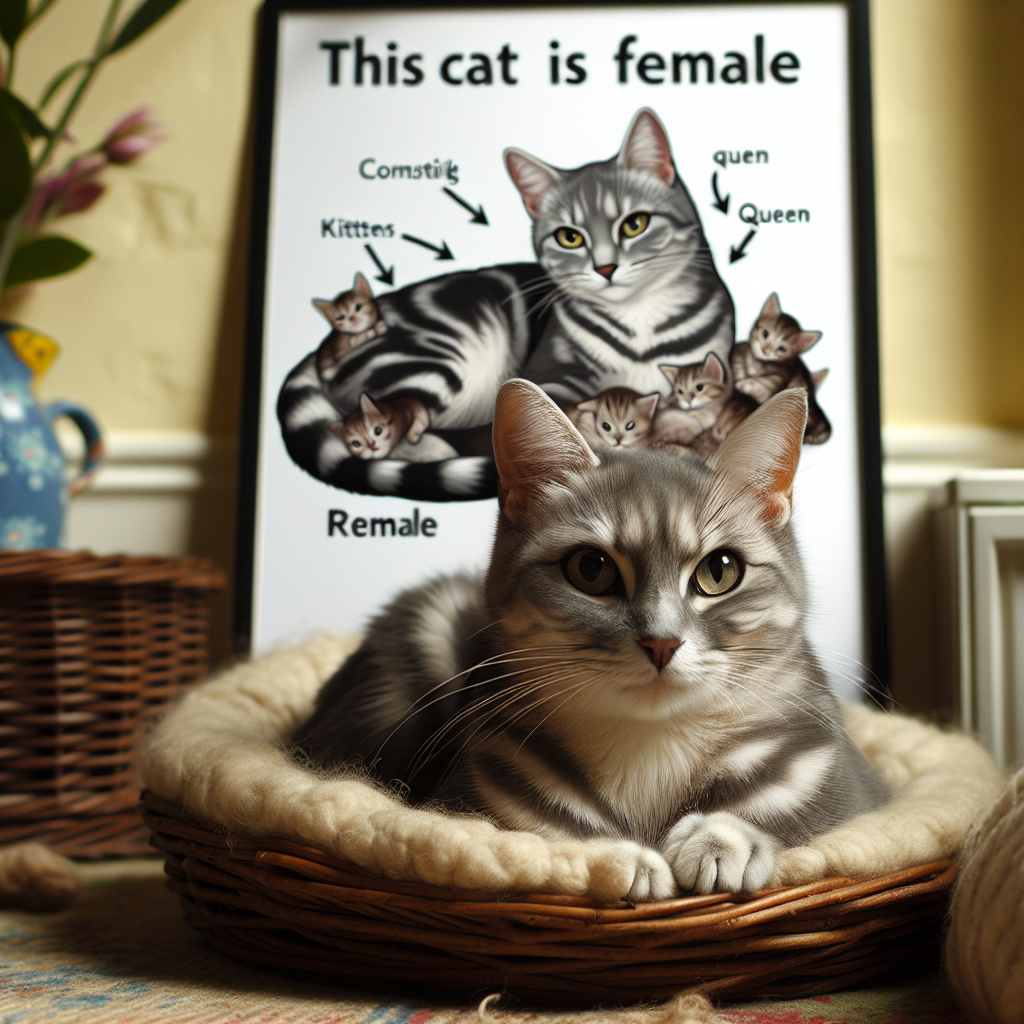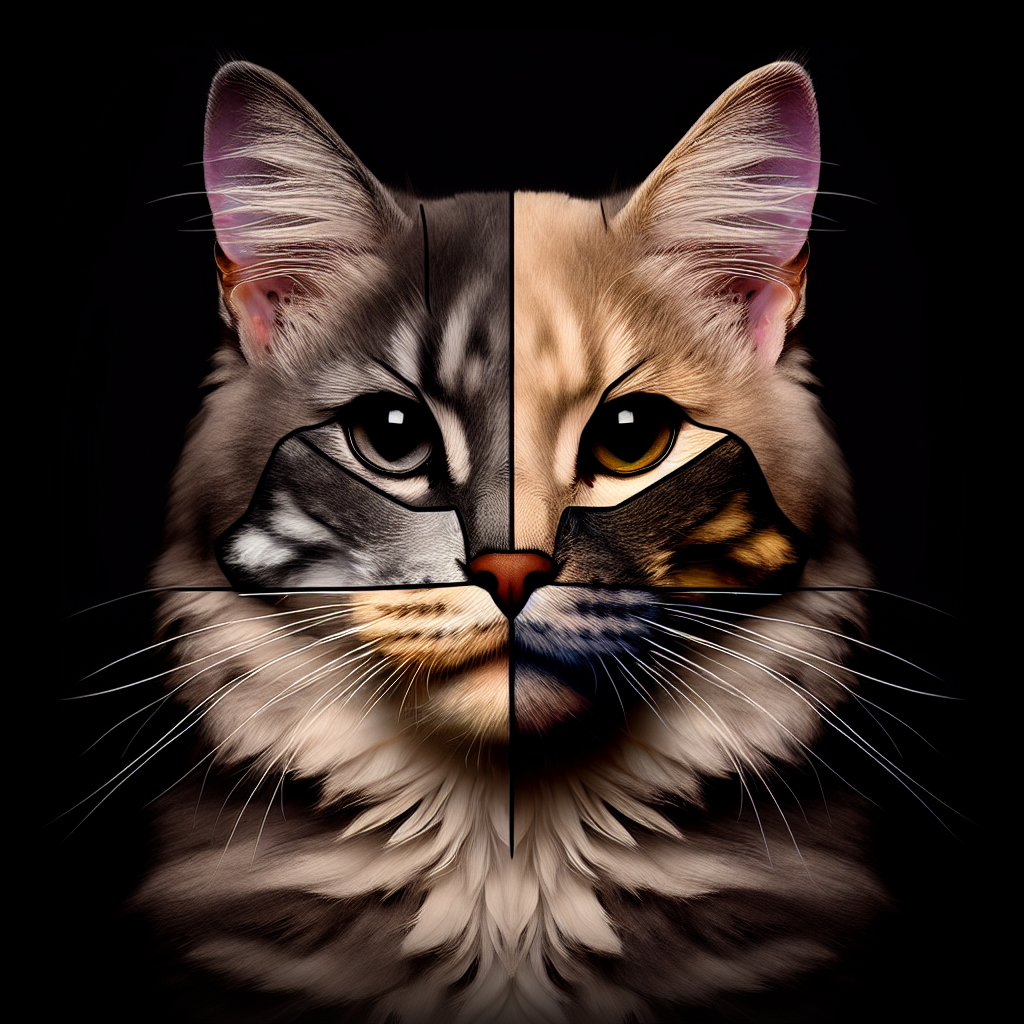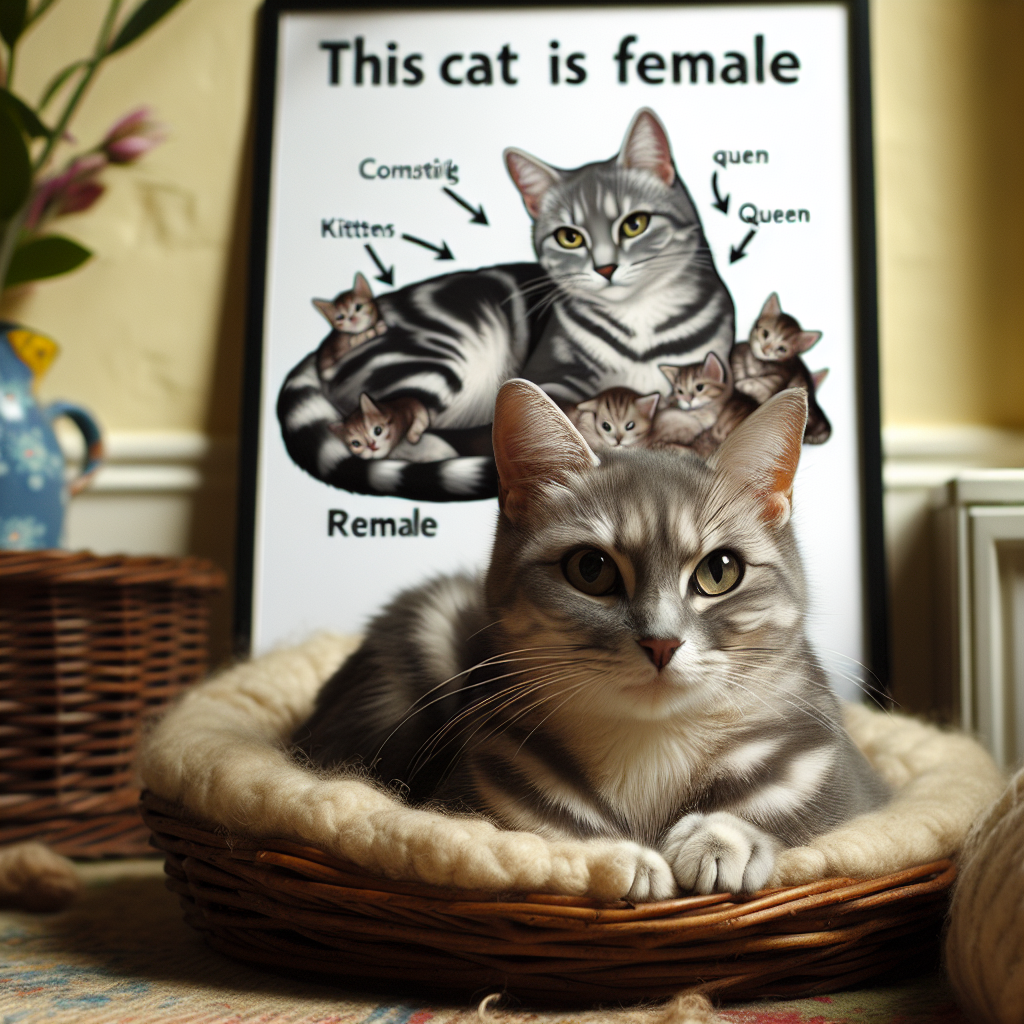Have you ever wondered if grey tabby cats are always male? Well, it turns out that this common misconception is not entirely true. While it’s true that the majority of grey tabby cats are male, there are actually female grey tabbies too. In this article, we will explore the reasons behind this belief, as well as shed light on the truth behind the gender of grey tabby cats. So, if you’re a cat lover or simply curious about feline genetics, keep reading to discover the fascinating world of grey tabbies!
Overview of Grey Tabby Cats
Definition of Grey Tabby Cats
Grey tabby cats, also known as gray tabbies, are a specific coat color pattern found in domestic cats. The term “tabby” refers to a specific coat pattern that is characterized by dark stripes, swirls, or spots on a lighter base color. Grey tabby cats have a base color that ranges from a pale silver-gray to a deeper, charcoal hue, with distinct markings in shades of black, brown, or gray.
Characteristics of Grey Tabby Cats
Grey tabby cats are known for their unique and captivating appearance. Their fur displays an intricate mix of patterns, such as the classic mackerel tabby pattern, where the stripes resemble the skeleton of a fish, or the blotched tabby pattern, featuring large, rounded spots or patches. These patterns give grey tabbies a sense of elegance and enhance their natural beauty.
Aside from their striking appearance, grey tabby cats have distinct personalities. They are often described as being intelligent, playful, and curious. They are known to have a friendly and outgoing nature, making them beloved companions for individuals and families alike. Grey tabbies are often praised for their affectionate and loyal demeanor, making them a popular choice for both experienced cat owners and first-time adopters.
Common Misconceptions
Despite their popularity, there are several misconceptions surrounding grey tabby cats. One of the most common myths is the belief that all grey tabby cats are male. While it is true that the majority of grey tabbies are male, it is not an exclusive characteristic. Female grey tabby cats do exist, although they are relatively less common. This misconception may stem from the fact that the gene responsible for the tabby pattern is located on the X chromosome, which is present in both male and female cats. However, the manifestation of the tabby pattern can be influenced by other genetic factors, resulting in a varied distribution among males and females.
Tabby Cat Coat Colors
Variations of Tabby Coat Colors
Tabby cats come in a wide range of colors, each unique and beautiful in its own way. From the classic brown tabby to the striking silver tabby, the tabby coat pattern can be found in various colors and combinations. Besides grey, common tabby coat colors include brown, red, silver, and cream. Each color variation adds its own charm and personality to a cat’s appearance, making each tabby cat truly one-of-a-kind.
The Genetics behind Tabby Coat Patterns
The tabby coat pattern is the result of complex genetic interactions. It is primarily influenced by the agouti gene, which determines the distribution of dark and light pigment on a cat’s fur. This gene, along with several modifying genes, influences the specific patterns seen in tabby cats. The genetics of tabby coat patterns can be quite intricate, with different combinations resulting in various patterns and colors. Research into cat genetics continues to shed light on the fascinating world of tabby coat patterns and the factors that contribute to their diversity.

The Grey Tabby Coat
Understanding Grey Coat Color in Cats
The grey coat color in cats, including grey tabby cats, is caused by a combination of genetic factors. The specific genes involved in determining the shade of gray can vary, resulting in different intensities of color within the grey tabby population. The underlying pigment responsible for the grey color is called eumelanin. The concentration and distribution of eumelanin throughout the fur determine the final appearance of the grey coat. The interplay between the grey color gene and other modifying genes can result in a wide range of grey shades in tabby cats.
Factors Influencing Grey Tabby Coat Color
Several factors can influence the appearance of the grey tabby coat color. Genetics play a significant role, as specific gene combinations can result in different shades of grey. Environmental factors, such as exposure to sunlight, can also affect the coat color, causing it to fade or become more vibrant. Additionally, the age of the cat can influence the grey tabby coat color, as kittens may have a lighter coat that darkens as they mature. Nutritional balance, overall health, and grooming practices can also impact the vibrancy and condition of the grey tabby coat.
Grey Tabby Patterns
Within the realm of grey tabby cats, there are various patterns that can occur. The mackerel tabby pattern is characterized by thin, parallel stripes that resemble fishbones, while the blotched tabby pattern showcases larger, rounded spots or patches. The ticked tabby pattern features individual hairs with alternating bands of light and dark color, giving the appearance of a salt-and-pepper effect. These patterns, combined with the diverse shades of grey, contribute to the unique and captivating appearance of grey tabby cats.
Gender Differences in Cats
Sex Determination in Cats
Understanding the differences between male and female cats starts with the process of sex determination. In cats, as in many other species, it is the presence or absence of specific sex chromosomes that determines the individual’s sex. Female cats possess two X chromosomes (XX), while males have one X and one Y chromosome (XY). The combination of these chromosomes determines whether an individual develops as male or female.
Male and Female Chromosomes
In cats, the X chromosome carries the primary gene responsible for the tabby coat pattern. Since males possess only one X chromosome, they only need to inherit the tabby gene from their mother to exhibit the tabby pattern. In contrast, females require two copies of the tabby gene, as they inherit one from each parent. This gene inheritance pattern contributes to the predominance of male grey tabby cats.
Physical and Behavioral Differences
Physically, male and female cats may exhibit some differences. Male cats, especially unneutered ones, tend to have broader heads, more prominent jowls, and a heavier overall build compared to females. They are also more likely to develop physical traits such as a thick neck ruff and prominent cheek tufts. Behaviorally, males might be more prone to territorial marking and aggressive displays, particularly during mating season. However, it is essential to note that individual personality and behavior can vary widely among cats, regardless of their sex.

Gender and Coat Color
The Association between Coat Color and Gender
While gender does play a role in the prevalence of certain coat colors and patterns, it is important to note that it is not a definitive determinant. The association between gender and coat color arises from the genetic inheritance of specific color and pattern genes, which can be influenced by the sex chromosomes.
Perception of Tabby Cats
There is a common perception that tabby cats are predominantly male, which may be due to the association of the tabby coat pattern with gender-specific characteristics, such as the aforementioned predominance of male grey tabby cats. This perception is further reinforced by cultural stereotypes, media portrayals, and anecdotal observations. However, it is crucial to recognize that female tabby cats, including grey tabbies, exist and exhibit the same captivating qualities as their male counterparts.
Common Misconceptions about Grey Tabby Cats
One of the most persistent misconceptions about grey tabby cats is the belief that they are always male. As mentioned earlier, while male grey tabby cats are more common, female grey tabby cats do exist and can display the same beautiful coat patterns. It is important to dispel this misconception and appreciate the diversity within the grey tabby cat population, regardless of their gender.
Grey Tabby Cats: Male or Female?
Male Grey Tabby Cats
As previously mentioned, male grey tabby cats are more prevalent than females. This is primarily due to the genetic inheritance of the tabby coat pattern, which is located on the X chromosome. Since males have only one X chromosome, they require only one copy of the tabby gene to exhibit the tabby pattern. This genetic advantage contributes to the higher incidence of male grey tabby cats.
Female Grey Tabby Cats
While female grey tabby cats are rarer compared to males, they can still be found within the grey tabby population. Female grey tabbies require two copies of the tabby gene, inheriting one from each parent, to display the tabby coat pattern. The combination of specific genetic factors can lead to female grey tabby cats, albeit in smaller numbers.
Rarity of Female Grey Tabby Cats
The rarity of female grey tabby cats can make them a sought-after choice for cat enthusiasts. Their unique combination of gender and coat color adds an extra element of allure to their already captivating presence. However, it is essential to remember that whether the cat is male or female, the most important factor when adopting a new furry companion is their compatibility with your lifestyle and the ability to provide a loving and caring environment.
Other Factors Influencing Coat Color
Age and Coat Color Changes
Coat color in cats can change over time, particularly during the first few months of a cat’s life. Kittens may exhibit a lighter coat color that deepens and intensifies as they mature. This is especially true for grey tabby cats, as the pigmentation of the coat can evolve during the cat’s growth. It is essential to consider this when adopting a grey tabby kitten and to anticipate potential changes in their coat color as they age.
Environmental Factors
The environment in which a cat lives can also influence its coat color. Sunlight exposure can cause the coat to fade or lighten, while certain indoor lighting conditions may enhance or alter the appearance of the coat. The surrounding temperature can also impact coat texture and thickness. While environmental factors may not play a significant role in the development of the tabby coat pattern itself, they can affect the overall appearance of a cat’s coat.
Health and Genetics
The health and genetics of a cat can also impact their coat color. Nutritional deficiencies or imbalances can affect the vibrancy and condition of the coat. Conversely, a healthy diet rich in essential nutrients can promote a lustrous and healthy coat. Additionally, certain genetic conditions or mutations can cause variations in coat color, patterns, or texture. Regular veterinary care and a balanced diet are crucial for maintaining the overall health and well-being of a grey tabby cat.
Adopting a Grey Tabby Cat
Considerations before Adoption
Before adopting a grey tabby cat, it is essential to consider a few factors. Assess your living situation and ensure it is suitable for a cat. Consider any existing pets and their compatibility with a new addition to the family. Determine your availability to provide the necessary time, attention, and care for a cat. It is also important to evaluate your financial resources to ensure you can support the cat’s needs, including regular veterinary care, proper nutrition, and entertainment.
Choosing Based on Sex or Coat Color
When adopting a grey tabby cat, it is crucial to base your decision on factors beyond just their sex or coat color. While gender and coat color may play a role in your preference, it is equally important to consider the cat’s personality, behavior, and compatibility with your lifestyle. Every grey tabby cat, regardless of gender, has the potential to become a loving and cherished companion.
The Importance of Spaying and Neutering
Regardless of your cat’s gender or coat color, it is vital to spay or neuter your grey tabby cat. Spaying and neutering not only help control the cat population but also offer various health benefits. Spaying female cats prevents the risk of uterine infections and reduces the likelihood of mammary tumors. Neutering male cats eliminates the risk of testicular cancer and reduces certain behavioral traits, such as territorial marking and aggression. Additionally, spaying and neutering can help prevent certain types of health issues that may be more prevalent in intact cats.
Caring for a Grey Tabby Cat
Regular Grooming and Hygiene
Caring for a grey tabby cat’s coat involves regular grooming and hygiene practices. Brushing their fur helps remove loose hair, prevents matting, and maintains a healthy coat. Depending on the coat length, brushing can range from daily to weekly. Additionally, maintaining good dental hygiene, cleaning their ears, and trimming their nails are vital aspects of overall cat care. These grooming practices not only keep your grey tabby cat looking their best but also contribute to their well-being.
Proper Nutrition
Providing a balanced and nutritious diet is crucial for your grey tabby cat’s well-being. Consult with your veterinarian to determine the appropriate type and amount of food for your cat based on their age, size, and activity level. Ensure their diet includes high-quality protein, essential vitamins and minerals, and an appropriate balance of carbohydrates and fats. Providing fresh water at all times is also essential to keep your grey tabby cat hydrated and healthy.
Exercise and Mental Stimulation
Grey tabby cats, like all cats, require regular exercise and mental stimulation to maintain their physical and mental health. Ensure your grey tabby has access to interactive toys, scratching posts, and climbing structures to engage their natural instincts. Regular play sessions, such as interactive games or using toys to simulate hunting, can provide both physical exercise and mental stimulation. Creating a stimulating environment that allows your grey tabby to explore, play, and relax is essential for their overall well-being.
Conclusion
Grey tabby cats are captivating creatures with a unique coat color and patterns that set them apart. While there are some misconceptions surrounding these furry friends, it is important to recognize the diversity within the grey tabby cat population, including the presence of both male and female grey tabbies. Adopting a grey tabby cat involves considerations such as the individual’s personality, behavior, and compatibility with your lifestyle. Regardless of their gender or coat color, grey tabby cats make wonderful companions and deserve a loving and caring forever home. With proper care, grooming, nutrition, and mental stimulation, your grey tabby cat can thrive and bring joy to your everyday life.

